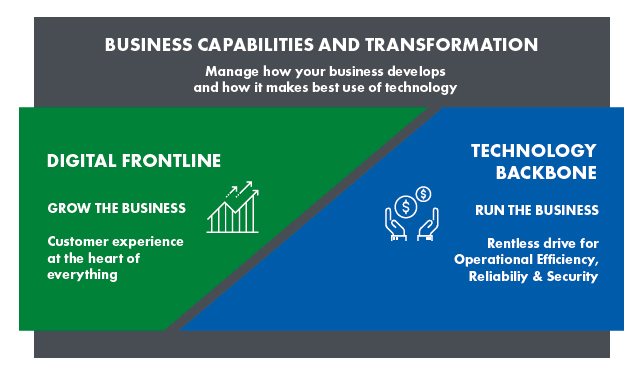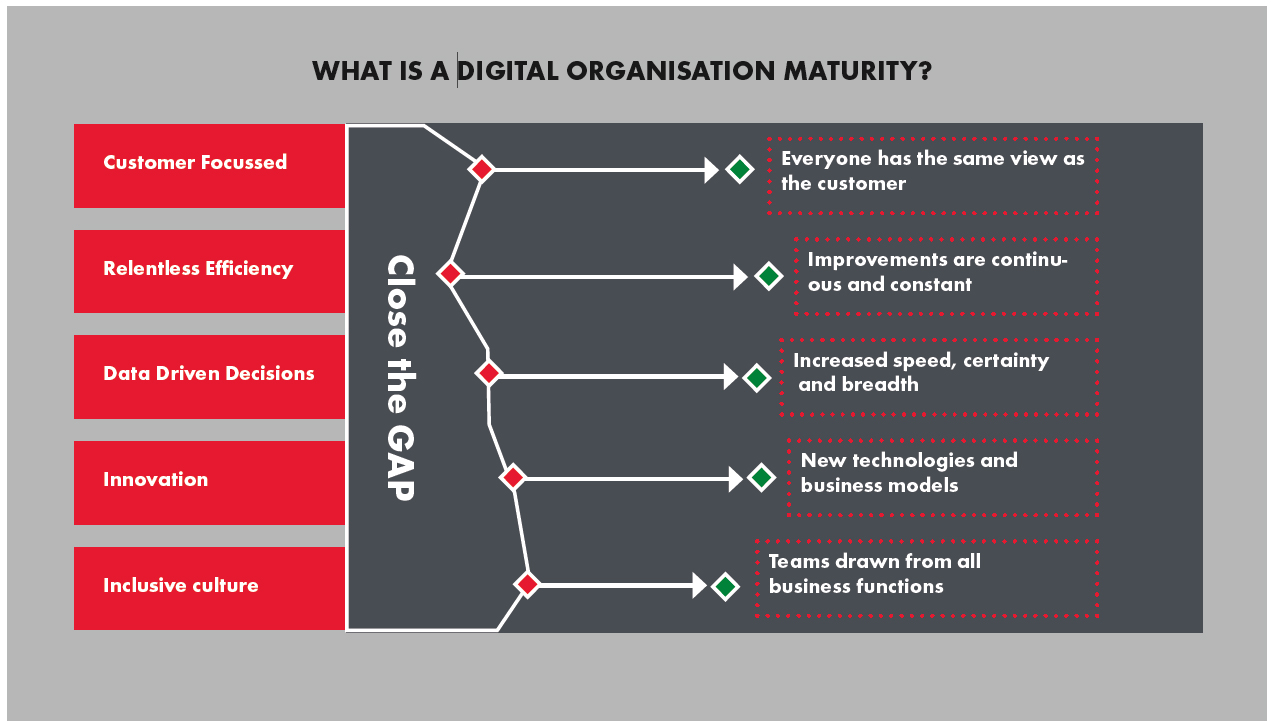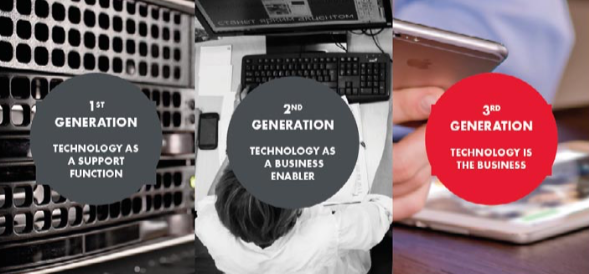Nick Russell, managing director of Xonetic, explores how the Business Technology Framework can help organisations make better use of technology
In today’s world digital transformation is everywhere. But what does this really mean? I think the single most important concept is being “Digital” means a whole new way of working and thinking. It is not just technology.
In fact, I often think that technology is the easy bit (although to be fair some of it is quite hard). The Business Technology Framework has been designed to help organisations make better use of technology. If you are unsure how it could be helpful, then read on….
1. Your competitors seem to be better at digital innovation than you
I created this diagram in 2018 during the early development of the Business Technology Version 4 release. The point is to really demonstrate what is required to be a digital business.
As you can see many parts of the challenge are related to culture and approach – “ways of working”. Innovation, for example, is not something that happens by accident. You don’t just assemble a group of people and give them coffee, bean bags and table football to play with. Innovation is a Process. It can be built, refined, and made continuous.
Business Technology sets practical ways to mature your digital maturity in a holistic way.
2. Your business growth seems held up by digital projects which are slow to deliver
In a digital world there are often many projects to deliver simultaneously. Business Technology (BT) offers a deliberate framework to help manage this delivery.
Firstly, the Digital Frontline which is often responsible for providing revenue growth, needs a set of tools & methods that allow it to flourish. Simultaneously the Technology Backbone that is often responsibe for a large proportion of bottom line cost, also needs to be well managed.
Making sure that these two elements do not drift apart from each other, is important to ensuring that technology delivery in your organisation is successful. Organisations that have learnt to combine knowledge, people and process with both sides of the model are the best placed to take advantage of digital transformation.
3. Different parts of your business have different approaches to digital transformation
EXPLOITING INFORMATION TECHNOLOGY IS THE JOB OF EVERY PART OF AN ORGANISATION, NOT ONLY IT. I don’t apologise for the bold print – this is a vital to consider.
Your organisation should not have the IT team “doing IT” and all other departments doing “The Business”. Technical teams and non-technical teams have a responsibility to work together, coaching and supporting each other in combined teams.
The Business Technology standard has been created to provide an easy way for non-technical teams to engage with technology process. BT also provides a guiding light to technical teams by ensuring they follow good practices. Bringing a common language and understanding to the elements behind digital transformation is vital to ensuring the overall business is working with and not against each other.
4. You want to mature your IT organisation further than IT frameworks such as ITIL & Prince
These frameworks and others such as SAFe have extremely good coverage over distinct areas of the technology landscape. The BT framework is the only place where all of these disciplines are tied together into an holistic view. Many parts of an organisation do not need so much in-depth discipline specific content. Higher level thinking which includes the main topics but simplifies them and puts them in the context of each other is necessary for overall planning and management.
BT training is available across the enterprise and is very helpful for all disciplines. We advise discipline specific (for example ITIL) training and knowledge only in the places where it adds the most value. In this way, BT enables your organisation to provide the most appropriate training to all parts of the organisation, and you can be sure that all the content at different levels is well aligned and interlocked.
5. You have tried agile and DevOps but they are hard to embed or they have seem not to deliver value
The crux of the issue when implementing DevOps is – it is hard simply because for most organisations it represents a very different approach to traditional siloed team structures. Agile is often characterised as requiring “no planning” or “no documentation” whereas the reality is that agile requires very careful planning and getting documentation at the right level is hard.
Having best practice to step through develops maturity, lessens the risk and provides confidence that you are applying the right approaches.
6. You get the feeling that this stuff must have been done before but you can’t find best practice that evidences it
The Business Technology Framework is based on the idea that best practice should be shared with the community to avoid reinventing the wheel. Now in its 11th year BT has been used by many hundreds of companies across the Nordics to harness Digital Energy. Nordic companies have shared what has worked well, and what hasn’t, with the BT Forum. This knowledge is distilled, commercial sensitive specifics removed, and then shared back with the community in the form of the Open-Source Framework. Business Technology really is built on best practices that work.
7. You want to be part of a community!
First and foremost Business Technology is a community. The model goes from strength to strength due to the large community who feel that Technology can be better! The community is inclusive – small to large companies are welcome and here at Xonetic we are happy to support any approach to implementation. Come and join us!
If you would like to understand more about our open-source best practice knowledge, training and IT advisory services then please drop in for a virtual coffee or register for a free seminar.
7 reasons why Business Technolgy can help you – Xonetic
Please note: This is a commercial profile














